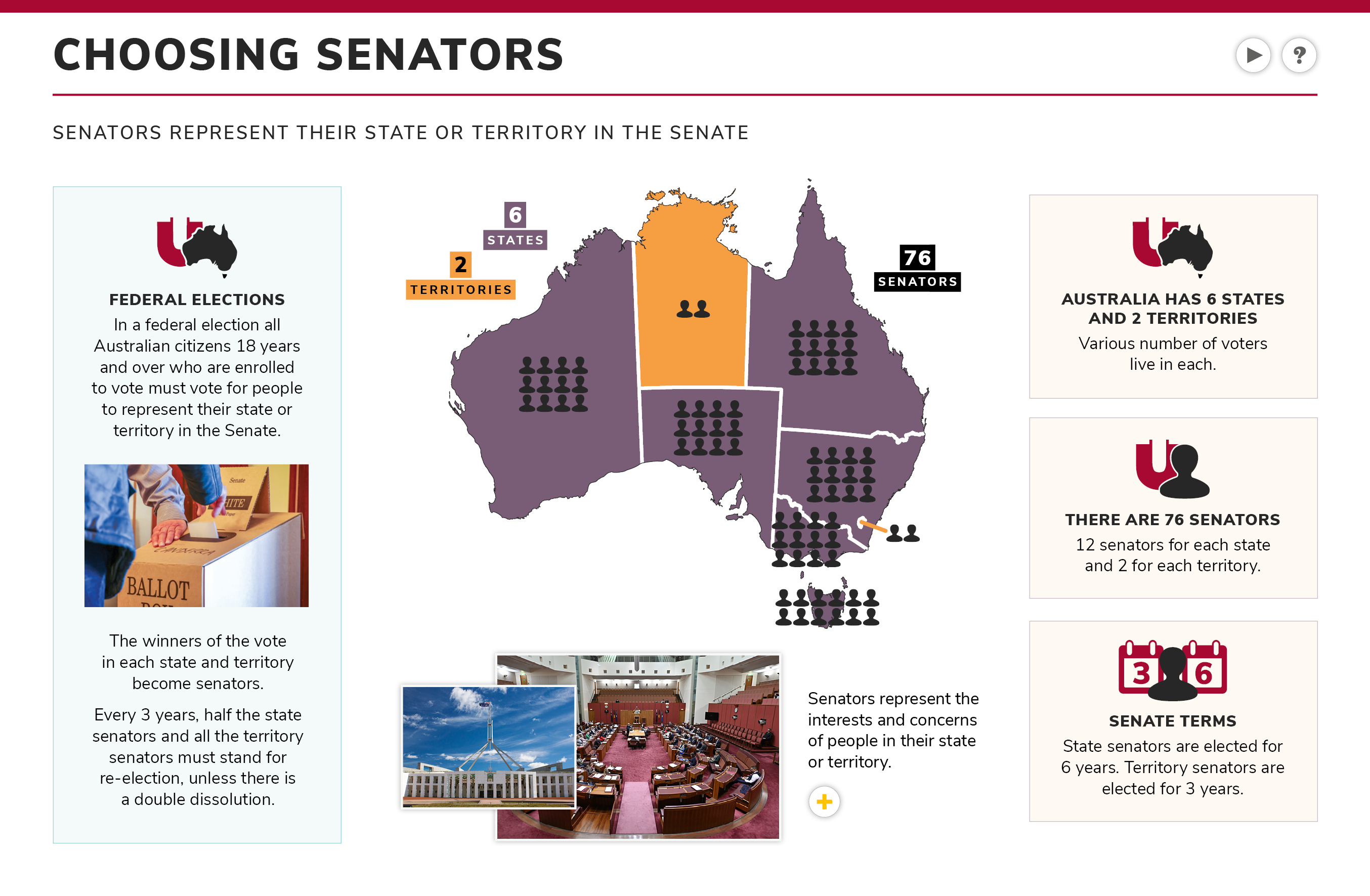Choosing senators
Discover who represents us in the Senate and how they are chosen with this interactive poster. Use the teaching notes and activities to support your students' learning.
Teaching notes and activities
Curriculum links
Year 5: ACHASSK115; ACHASSK116
Year 6: ACHASSK145; ACHASSK147
Year 8: ACHCK062
Before you begin
Read the Federal elections fact sheet, which explores how federal elections are run to select people to represent Australians in the Australian Parliament. Learn about how a double dissolution occurs when both the Senate and the House of Representatives are dissolved – shut down – in order for a federal election to take place.
You may also like to explore the Australian Electoral Commission's teacher resources. These include an online professional learning course and a range of resources.
Getting started
These discussion starters are listed from easier to more complex. Choose the ones that work best for your class.
- How do senators get their job?
- Compare the Choosing members poster with this poster. A member of the House of Representatives is the single representative for an electorate. Multiple senators represent an entire state or territory. If you were a member of parliament, which job would you prefer? Why?
- Even though we have a federal election every 3 years, state senators serve 6-year terms—double the length of the term of a member of the House of Representatives. This rule is intended to strengthen the Senate’s role as a ‘house of review’ that looks closely and critically at the bills passed by the House. Can you think of how 6-year terms help senators do this?
- An important part of a senator’s job is committee work. This involves investigating bills the Parliament is considering, as well as other issues that are important to Australians. What is one issue you think the Australian Parliament should investigate? Everyday Australians often make submissions to committees. What would you say to a committee investigating the issue you identified?
Activities
Voting age research activity
In 1973, the Australian Parliament lowered the voting age in Australia from 21 to 18. Today there is debate about whether it should be lowered further.
- Ask students to work in groups to investigate arguments for and against lowering the voting age in Australia.
- Hold a class discussion or use the Make a law: Senate Classroom activity to debate a bill to lower the voting age.
Reflection
After looking at the interactive poster and completing some of the activities, discuss these questions with your class.
- Sometimes the Senate and the House of Representatives are unable to agree on a bill and a deadlock happens. Deadlocks can trigger a double dissolution election, which means every member of parliament has to stand for re-election. Why do you think the people who wrote the Australian Constitution in the 1890s included this double dissolution rule?
- A double dissolution election doesn’t always occur when there is a deadlock. How else do you think members of parliament work out their disagreements? Why might they prefer to try other strategies instead of going to a double dissolution election?
